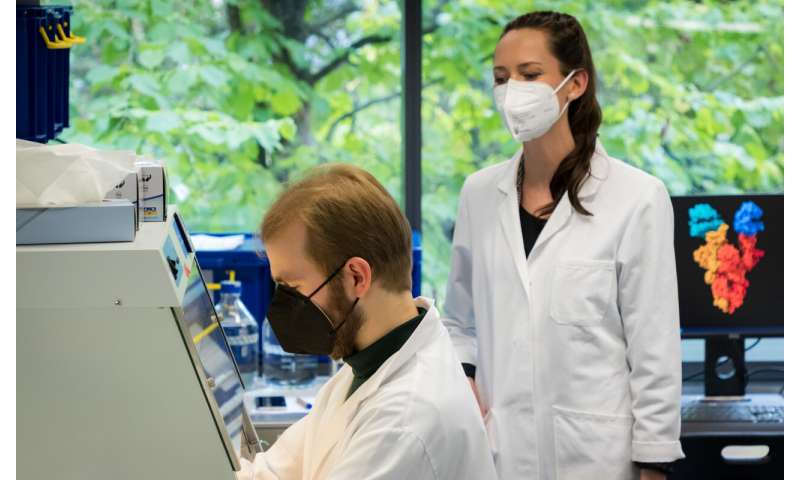Stolen DNA strengthens immune diversity

A few years ago, Professor Kathrin de la Rosa and her colleagues in the lab of the Swiss immunologist Antonio Lanzavecchia made an unusual discovery. The team found antibodies in the blood of malaria patients that had been made according to the blueprint of a gene that actually had a totally different function. “This gene usually codes for a receptor that inhibits the immune system, which the malaria pathogen may target to reproduce more easily,” explains de la Rosa, who directs the Immune Mechanisms and Human Antibodies Lab at Berlin’s Max Delbrück Center for Molecular Medicine in the Helmholtz Association (MDC) and the Berlin Institute of Health at Charité (BIH).
However, the immune systems of the people infected with malaria had obviously fought back. “The antibodies we found had integrated a piece of this receptor, called LAIR1, thereby gaining the ability to recognize the parasites more effectively,” says de la Rosa, who also holds at the BIH the Johanna Quandt Professorship for Translational Immune Mechanisms, which is funded by Stiftung Charité.
The strategy is widespread
The initial discovery raised many questions for de la Rosa. Could this trick only be performed by the immune system of malaria patients? Or by people of African origin? Is the LAIR1 receptor unique regarding its ability to integrate into the antibodies? Or did they perhaps discovered a wholly unknown mechanism used generally by the human immune system to tailor-make antibodies in its B cells?
In a study just published in the journal Proceedings of the National Academy of Sciences (PNAS), de la Rosa and her team have provided initial answers to these questions. “In more than 80 percent of the European and African donors, we detected antibodies whose creation required the use of foreign genes or other distant DNA fragments,” reports Mikhail Lebedin, first author of the study and a researcher in de la Rosa’s lab at the MDC. “And it did not matter if these people had been infected with malaria before or what ethnic group they belonged to.”
The theft follows a plan
In addition, according to Lebedin, the foreign material was found only in one specific region of the antibodies, the heavy-chain segments of the Y-shaped proteins. For him and his colleagues, this was an important indication that the “theft” of foreign genetic material followed a plan. The researchers found evidence substantiating this when they mapped the stolen fragments onto the human genome and discovered conspicuous patterns of their origin. “For example, they very often came from the mitochondria of the cells or from the ends of chromosomes in the cell nucleus,” Lebedin explains.
For their work, the research team developed their own technique for studying the antibody transcripts—i.e., the RNA matrices that are read during protein production—using high-throughput analysis. “We needed a highly sensitive procedure, as antibodies with foreign components would otherwise be easily overlooked in the masses of antibodies,” says de la Rosa. “For only about one in every ten thousand to a hundred thousand antibodies in the blood has these special properties.” But that is apparently enough to make the immune system particularly robust under certain conditions—such as malaria.

The goal is a cellular vaccine
“So far, the assumption has been that the diversity of antibodies only resulted from mutations in the antibody genes,” de la Rosa explains. But this assumption was incomplete. “Nevertheless, our study ultimately raises more questions than it answers,” she says. For de la Rosa, the two most important questions are: How does the process of stealing DNA actually work? And can it be used to artificially create specific new antibodies and the B cells that produce them?
Source: Read Full Article
